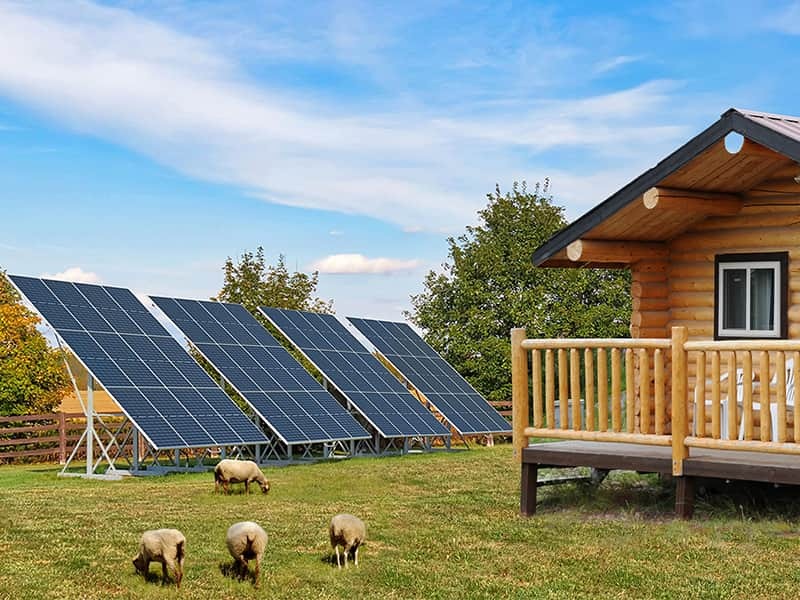Welcome to the warm and bright world of solar energy! In recent years, solar power has surged in popularity, offering a renewable and eco-friendly source of energy to homeowners, businesses, and adventure seekers alike. Whether you’re intrigued by the prospect of lowering your electricity bills, contributing to a healthier planet, or simply curious about how solar energy works, you’re in the right place. Let’s embark on a journey to understand the ins and outs of solar energy, and how it can light up your life.
Solar energy starts with capturing sunlight and converting it into electricity, a process made possible by solar panels placed atop roofs or in open spaces. These panels, made of photovoltaic (PV) cells, absorb sunlight and generate direct current (DC) electricity. This DC electricity is then transformed into alternating current (AC) electricity through a device called an inverter, making it usable for homes and businesses. The beauty of solar energy lies not just in its simplicity, but in its versatility, offering solutions for grid-connected setups as well as off-grid escapes.
The magic of a solar power system lies within its core components – the solar panels, inverter, battery (for energy storage), and charge controller (for systems with batteries). Together, these components harness the sun’s energy, store it, and make it available for use, day or night. Solar panels play the forefront role, capturing sunlight and converting it into a form of electricity that can be either used immediately or stored in batteries for later use. The inverter’s job is crucial, as it changes DC electricity from the panels (or batteries) into AC electricity, which powers most home appliances.
Maintenance of a solar power system is surprisingly minimal, primarily involving keeping the panels clean and monitoring the system to ensure it operates efficiently. Solar panels have a durable design, capable of withstanding the elements for decades. Advances in technology have made solar panels more efficient and less intrusive, with options now available that seamlessly blend into your home’s aesthetic. Whether you opt for a robust, grid-tied system or a bespoke off-grid setup, solar energy offers a pathway to reduce reliance on traditional power sources and make a lasting, positive impact on the environment.

- A beginner’s visual guide to solar power, illustrating the fundamental concepts. Source: themudhome.com
The solar panel market flourishes with a variety of types, but monocrystalline and polycrystalline panels are the most prominent. Monocrystalline panels, known for their efficiency and sleek black appearance, are made from a single, continuous crystal structure. Polycrystalline panels, on the other hand, are identified by their blue speckled look, resulting from the mixture of multiple silicon crystals. Each type has its merits, with the choice often boiling down to individual needs regarding space, budget, and aesthetic preferences.
Efficiency plays a pivotal role in the selection of solar panels. It’s about getting the most bang for your buck in terms of electricity production per square inch of panel. While monocrystalline panels typically take the lead in efficiency, advancements in technology are constantly narrowing the gap, making polycrystalline panels equally viable for many applications. The efficiency of your solar panels directly influences the size of the system you need; higher efficiency means you might need fewer panels to meet your energy requirements.

- Important considerations when setting up a solar power system, from kits to portability. Source: renogy.com
Installation and maintenance of solar panels are simpler than many might assume, offering years of low-maintenance, renewable energy once properly set up. Professional installation ensures optimal placement and angling of panels for maximum sunlight exposure, crucial for maximizing energy production. For those inclined towards DIY, various kits and resources are available, guiding you through the process of setting up your own solar power system tailored to your specific needs.
Maintaining your solar system primarily involves ensuring the panels remain clean and free of debris, such as leaves or bird droppings, which could obstruct sunlight and reduce efficiency. Most systems require little beyond occasional monitoring and a yearly checkup to ensure all components operate as intended. With longevity in mind, investing in solar energy is not just about adopting renewable energy; it’s about embracing a future where clean, sustainable power is the norm.

- Monocrystalline vs. Polycrystalline: Understanding the efficiency of different solar panels. Source: renogy.com
Enlightening communities, powering businesses, and brightening homes, solar energy stands as a beacon of hope for a sustainable future. Embarking on the solar journey represents a commitment to environmental stewardship and offers the exciting possibility to tap into the unlimited potential of the sun. As we continue to explore solar energy and its vast possibilities, remember that each panel installed is a step closer to a cleaner, greener planet. Embrace the sunshine, and let solar energy illuminate the path to a brighter tomorrow.

